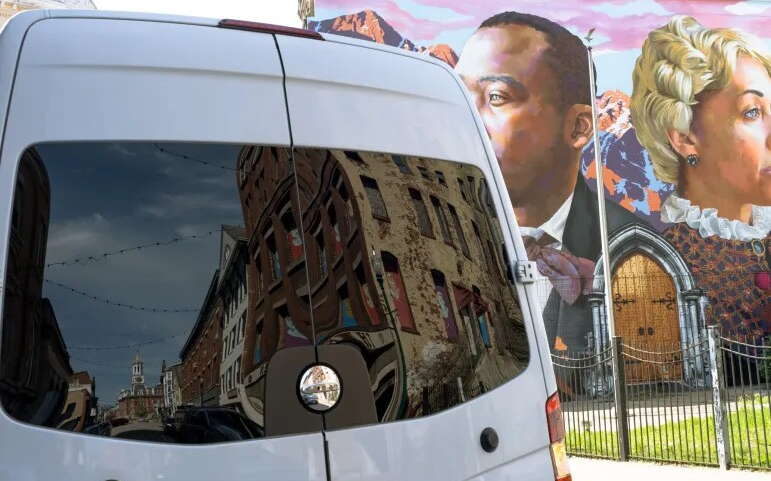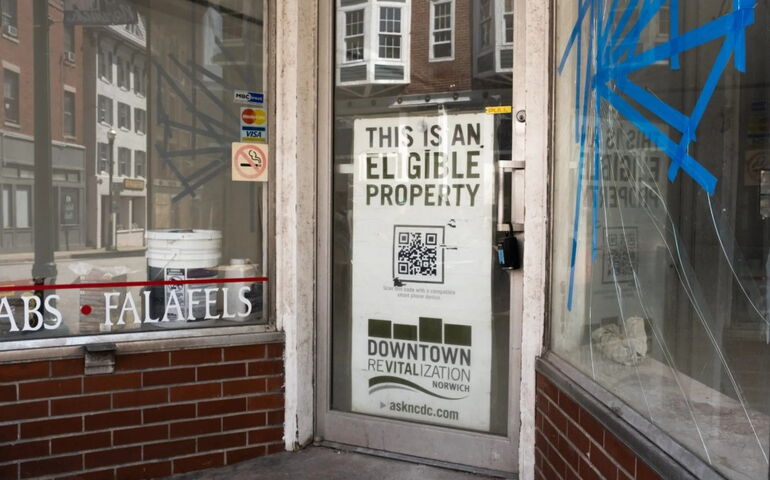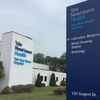
Processing Your Payment
Please do not leave this page until complete. This can take a few moments.
-
News
-
Editions
-
- Lists
-
Viewpoints
-
HBJ Events
-
Event Info
- 2024 Economic Outlook Webinar Presented by: NBT Bank
- Best Places to Work in Connecticut 2024
- Top 25 Women In Business Awards 2024
- Connecticut's Family Business Awards 2024
- What's Your Story? A Small Business Giveaway 2024 Presented By: Torrington Savings Bank
- 40 Under Forty Awards 2024
- C-Suite and Lifetime Achievement Awards 2024
- Connecticut's Health Care Heroes Awards 2024
-
-
Business Calendar
-
Custom Content
- News
-
Editions
View Digital Editions
Biweekly Issues
- April 29, 2024
- April 15, 2024
- April 1, 2024
- March 18, 2024
- March 4, 2024
- February 19, 2024
- February 5, 2024
- January 22, 2024
- January 8, 2024
- + More
Special Editions
- Lists
- Viewpoints
-
HBJ Events
Event Info
- View all Events
- 2024 Economic Outlook Webinar Presented by: NBT Bank
- Best Places to Work in Connecticut 2024
- Top 25 Women In Business Awards 2024
- Connecticut's Family Business Awards 2024
- What's Your Story? A Small Business Giveaway 2024 Presented By: Torrington Savings Bank
- 40 Under Forty Awards 2024
- C-Suite and Lifetime Achievement Awards 2024
- Connecticut's Health Care Heroes Awards 2024
Award Honorees
- Business Calendar
- Custom Content
In CT towns and cities, ARPA is funding a downtown revitalization
 SHAHRZAD RASEKH / CT MIRROR
A sign in a vacant storefront on Norwich’s main street indicates it is eligible for the town’s revitalization project.
SHAHRZAD RASEKH / CT MIRROR
A sign in a vacant storefront on Norwich’s main street indicates it is eligible for the town’s revitalization project.
On a recent weekday at La Stella Pizzeria, tucked into a flatiron building at Main Street and Market Street in Norwich, lunch hour was buzzing. Many of the city’s other historical storefronts along its downtown thoroughfares were empty and quiet — as they have been for over two decades in some cases — but nearly every one hinted that some kind of transformation was underway.
A residential conversion of the 19th-century building adjacent to La Stella, “Water Street Lofts,” is nearly complete. Interior construction is visible through several storefront windows along Main Street and Franklin Street. Garden lights hang cheerfully over Broadway; passersby stop to lounge in pocket parks, and brightly painted murals call out from all corners of the commercial district.
“It’s coming alive again,” said Kevin Brown, executive director of the Norwich Community Development Corporation, as he stood at the Marina at American Wharf, where the city’s three rivers — the Yantic, Shetucket and Thames — converge.
Like many Connecticut cities and towns, Norwich has directed a small portion of federal COVID-19 relief funds, via the American Rescue Plan Act, to breathe new life into its hobbled Main Street businesses.
The COVID-19 pandemic accelerated a shift to remote work, dealing a blow to downtowns across the state that were already struggling to manage earlier losses of commerce to big-box stores, then online retailers.
“We’re in some ways living with a legacy of neglect,” said Michelle McCabe, executive director of the Connecticut Main Street Center. And now, “with workplace habits changing, we need to adjust,” she said. “Businesses need help.”

But McCabe said two pandemic-era trends — the rise in entrepreneurship and new public and private housing investments in downtown districts — are beginning to drive change on Main Streets. Putting a small amount of ARPA funding toward things like helping commercial landlords bring their street-level properties up to code, so they’re ready for new storefront tenants, can be transformational.
With just over $4 million in ARPA funds, the Norwich Revitalization Program is working to aid 17 small businesses and contributing to four larger special projects in its downtown. Those efforts have attracted over $25 million in private investment and will result in nearly 200,000 square feet of refreshed space. As Brown put it: “We’re turning the lights back on.”
Of the more than $615 million in American Rescue Plan funds spent so far on addressing the pandemic’s “Negative Economic Impacts” in Connecticut, roughly $45 million was distributed directly to businesses and nonprofits. Another $7 million has gone specifically toward things like rehabilitating commercial properties, seeding startups and business incubators and providing technical support to businesses.
(The $1.9 trillion American Rescue Plan Act included $350 billion in “State and Local Fiscal Recovery Funds,” which must be obligated by the end of this year and spent by the end of 2026. According to the most recent data reported to the U.S. Treasury Department, Connecticut state and municipal officials have budgeted over $3 billion in SLFRF projects, obligated $2.3 billion and spent nearly $1.8 billion. Within the "Negative Economic Impacts" category, Connecticut's project budget is nearly $1 billion with $850 million obligated as of the beginning of 2024.)
“All these Main Streets are coming back to life with the funds to do wish-list items that aren’t just idealistic but have a huge impact,” McCabe said. Places like Norwich already have the “incredibly gorgeous bone structure” of historical buildings, she said. With “the bandwidth and resources to pull in entrepreneurs — that’s where you start seeing that new vibe going on.”
Establishing the ‘ecosystem’
The town of Windsor used $100,000 in ARPA funds to help launch two new coworking spaces, one in a retrofitted industrial building near the train station downtown and one in a former bank in a commercial district in Windsor’s Wilson neighborhood. Windsor Worx, which also hosts a small business incubator known as The Neighborhood, and The Collective Space, which offers a creative studio for recording podcasts and shooting photography, both opened their doors last July.
Last week, Windsor Worx celebrated the first graduation for its incubator program. Owner Annisa Teich, who leads the program, invited friends and family to cheer on the four entrepreneurs as they pitched their startups in the coworking agency’s common area. They included an education consultant, an event planner, a handyman and a nonprofit orchestra initiative.
“By establishing these facilities in the community, we're hoping that folks with the entrepreneurial spirit will get some technical assistance and bump into other like-minded people who are entrepreneurs, want to get businesses launched that will someday move from their space to spaces in our downtown bricks-and-mortar locations,” said Patrick McMahon, Windsor’s economic development director.
“Anything that we can do to build that sort of entrepreneurial ecosystem in the town is beneficial, helps create jobs and create vibrant neighborhoods,” McMahon said. “So we thought that was a really good use of ARPA funding.”
Aside from entrepreneurial infrastructure, several towns and cities in Connecticut used ARPA money to modernize aging infrastructure in their downtowns and commercial business districts to improve safety and usability for visitors and businesses.
Fairfield is spending hundreds of thousands of dollars to mitigate flooding around its central business district. Bristol is slated to spend up to $1 million to install a retaining wall and refurbish a railroad overpass to accommodate more pedestrian activity in its Centre Square district. And Norwalk has put nearly $200,000 in ARPA funding toward a program called “Complete Streets,” aimed at improving pedestrian safety and accessibility.
City leaders in Waterbury identified a pressing need to update the century-old sewer and water infrastructure below Main Street and Bank Street downtown, in preparation for a streetscape improvement project. Over $10 million in ARPA was budgeted for the improvements.
Given that the city’s historical downtown structures already require a heavier lift — and more money — to outfit for modern tenants, that kind of below-the-surface improvement is key to attracting businesses, said Dan Pesce, director of Main Street Waterbury.
“It’s a real benefit to us, because we don't have to worry about any infrastructure under the ground that's aging. We won't need to address the underground infrastructure in downtown Waterbury for a very long time,” Pesce said. “That's going to be huge for us moving forward.”
Now that the infrastructure is in place, Main Street Waterbury is using ARPA funds to offer micro grants of up to $25,000 to attract enterprises to set up shop downtown. Pesce said firms can use the money for things like marketing or signage, “anything to get the business up and running, to locate into downtown Waterbury in coordination with a property owner who has a storefront that's vacant. That's our big push right now.”
Promoting ‘strolling in downtown’
The nature of the pandemic shifted the typical focus of economic development leaders in many cities and towns. Since indoor spaces presented risks for many residents and visitors, development went outside — toward outdoor recreation operations, urban parklets and al fresco dining, and a statewide expansion of public art installations.
In Middletown, the Downtown Business District put $200,000 toward commissioning local artists to create artwork that would go on display in vacant storefronts.
“As you were strolling in downtown, which many people were doing during COVID … it would give them something visually beautiful to look at,” Sandra Russo-Driska, coordinator with the district, said.
As the funding wound down and the storefronts filled back up with tenants, Middletown has relocated much of the original artwork to permanent locations, Russo-Driska said.
“It's a good problem to have: As we were putting artwork in and buildings were getting filled, we had to remove it,” she said. “Downtown Middletown has been very fortunate. We don't have vacant storefronts for long.”
A functioning business district needs both businesses and patrons, and several towns used ARPA funds for projects as simple as new signage on state highways pointing the way to their Main Streets.
At the state level, Connecticut leaders have spent over $70 million to boost the travel, tourism and hospitality sectors, supporting many museums and performing arts venues with ARPA funding. The state has also recently hired new leadership for its marketing and tourism offices, and it’s launched efforts to rebrand and market Connecticut beyond the state’s borders.
Aside from providing recovery grants to small businesses in town, Windham used $300,000 in ARPA funding to host large public events, including its Latin Multicultural Festival, at the outdoor Shaboo Stage in Willimantic — a short drive south from the University of Connecticut’s campus in Storrs.
“We’ve kind of created this atmosphere,” said Jim Bellano, Windham’s director of economic development. “There’s the Theatre Guild here, there's an art gallery in town, there's a lot of college-related things, bars, restaurants, a nationally famous tattoo parlor.”
“So we in the business community, we made the decision, you know, you are who you are. We're a college town, and we needed to cater to that,” Bellano said.
In New London, city leaders are similarly leaning into an aspect of the city’s identity that has the potential to draw a crowd. Construction is underway for a new $150 million National Coast Guard Museum, which is slated to open on the waterfront late this year or early next year.
The museum is expected to attract 300,000 visitors a year to the area, said Felix Reyes, director of the city’s Office of Development and Planning.
“If you think about that, it's like getting ready for a Christmas party,” he said. “You’ve got to change the house around and get ready for that type of traffic. So we're doing small things up to the major improvements.”
ARPA funds have gone toward improving infrastructure to enable the city to accommodate more people, such as street lighting and wayfinding signage.
“We're looking for foot traffic, that walkability, that sense of a place to be talked about,” said Elizabeth Nocera, economic development coordinator for the city.
New London also helped repair the roofs and facades of downtown buildings, as well as helping with code correction — as Norwich and Waterbury have done. The goal is to get historic storefronts to a state known as “vanilla box,” where a new tenant can come in and establish a personal footprint without having to worry about mechanical or structural issues.
Both Reyes in New London and Brown in Norwich have sought to multiply the impacts of ARPA funding by seeking out collaborators and additional sources of investment — public and private — thus increasing the scale of the projects and their reach. Funding from the state’s Communities Challenge grant and Community Investment Fund programs are adding public spaces, commercial development and housing in many Connecticut cities and towns.
New London’s economic development leaders also worked locally with the regional chamber of commerce, the local outpost of the Women’s Business Development Council and the Black Business Alliance to provide assistance and outreach around the city.
“We recognized that these dollars needed to be [put toward] very sustainable efforts, so we really relied on outside partners to help us with our small business initiatives,” Nocera said.
The rise of the ‘mixed use community’
Recent waves of hiring — in the thousands each year — at submarine manufacturer General Dynamics Electric Boat in Groton means nearby cities like Norwich and New London are managing an influx of not just tourists but hundreds more permanent residents in its downtown districts.
“That’s where the downtown and the Main Streets start taking advantage,” Reyes said. “Once people live by where they work, then you get all that indirect and induced [economic activity]. You get small businesses and you start getting markets, you need eggs and milk and gas and entertainment and restaurants for those people.”
Bridgeport was already seeing that transition before the pandemic, and it has accelerated in the last four years, said Lauren Coakley Vincent, president of the city’s Downtown Special Services District. In the downtown neighborhood, several former commercial buildings have been converted for residential use, Coakley Vincent said.
“There’s a big shift toward what would be called a mixed use community,” she said. “That does influence the type of uses you see at the ground floor level.” For example, there are fewer breakfast spots in the neighborhood and more nightlife now. There’s also a larger — and growing — dog population, she said.
At the same time, Bridgeport was making ARPA-funded grants available to hundreds of small businesses throughout the city for storefront improvements or expansion. In downtown, the special services district helped administer those dollars by handing out applications, answering questions and evaluating the submissions.
Roughly 30 businesses in the district received grants, and Coakley Vincent said as a result the downtown district successfully retained so many of its ground floor storefront businesses that its turnover rate actually declined.
All of it comes back to people, she said. The rise in downtown residents is driving more street-level economic activity, and that has magnified the impacts of the ARPA small business grants. Downtown today “is much more geared toward sort of a 24-hour use than it had been previously,” Coakley Vincent said.
Thomas Gaudett, the city's chief administrative officer, called it "a bit of a revival."
"The business environment, especially in the downtown, is more vibrant and more consistent than it's ever been," he said.

2022 Giving Guide
This special edition informs and connects businesses with nonprofit organizations that are aligned with what they care about. Each nonprofit profile provides a crisp snapshot of the organization’s mission, goals, area of service, giving and volunteer opportunities and board leadership.
Learn more
Subscribe
Hartford Business Journal provides the top coverage of news, trends, data, politics and personalities of the area’s business community. Get the news and information you need from the award-winning writers at HBJ. Don’t miss out - subscribe today.
Subscribe
2024 Book of Lists
Delivering Vital Marketplace Content and Context to Senior Decision Makers Throughout Greater Hartford and the State ... All Year Long!
Read Here-
2022 Giving Guide
This special edition informs and connects businesses with nonprofit organizations that are aligned with what they care about. Each nonprofit profile provides a crisp snapshot of the organization’s mission, goals, area of service, giving and volunteer opportunities and board leadership.
-
Subscribe
Hartford Business Journal provides the top coverage of news, trends, data, politics and personalities of the area’s business community. Get the news and information you need from the award-winning writers at HBJ. Don’t miss out - subscribe today.
-
2024 Book of Lists
Delivering Vital Marketplace Content and Context to Senior Decision Makers Throughout Greater Hartford and the State ... All Year Long!
ABOUT
ADVERTISE
NEW ENGLAND BUSINESS MEDIA SITES
No articles left
Get access now
In order to use this feature, we need some information from you. You can also login or register for a free account.
By clicking submit you are agreeing to our cookie usage and Privacy Policy
Already have an account? Login
Already have an account? Login
Want to create an account? Register
Get access now
In order to use this feature, we need some information from you. You can also login or register for a free account.
By clicking submit you are agreeing to our cookie usage and Privacy Policy
Already have an account? Login
Already have an account? Login
Want to create an account? Register






0 Comments